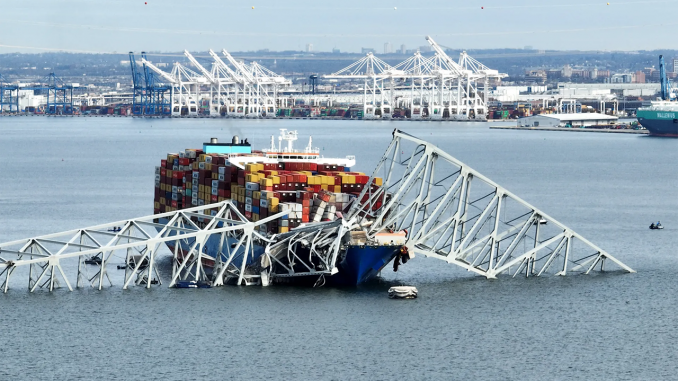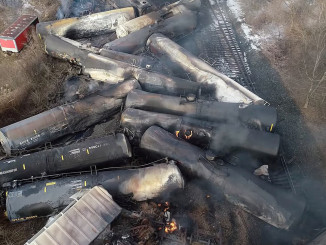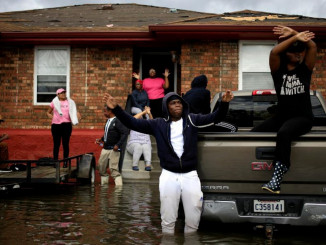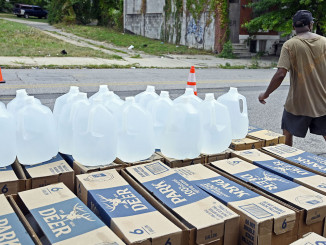
At 1:28 a.m. on March 26, a massive cargo ship, known as the Dali, collided with Baltimore’s Francis Scott Key Bridge, resulting in seconds in the collapse of most of the structure and the death of six construction workers who were performing pothole repair on the bridge. Before its collapse, the Key Bridge carried about 35,000 people across the Patapsco River on I-695 each day.
Minutes before the crash, the Dali sent a warning signal that it had lost steering control, allowing just enough time for the bridge to be closed to motorists before the collapse. However, the alert apparently was not passed on to the construction crew, who were on their lunch break in their vehicles at the time. The six men who died in the incident were immigrants from Mexico, Guatemala, Honduras, and El Salvador and lived with their families in Baltimore’s Highlandtown neighborhood and the nearby suburb of Dundalk.
The full effects of the bridge collapse are yet to be evaluated. The closure of a major highway is already having enormous effects on the commutes of local workers and on the procedures of interstate truckers. What’s more, the debris from the collapse will almost entirely block the Port of Baltimore to incoming and outgoing ships for at least several weeks. Baltimore’s port is the largest importer of passenger vehicles in the U.S. and plays a major role in the trade of many more commodities, supporting over 15,000 jobs on the docks and about 100,000 local jobs overall. The pause in shipments will immediately impact not only these workers and industries, but could also have cascading effects on the operations and workers throughout international supply chains. Environmental effects on the harbor are also sure to accumulate; the chair of the National Transportation Safety Board said that some cargo containers full of hazardous materials fell off the Dali into the water.
Baltimore is the country’s second-largest exporter of coal, and transportation company CSX has committed to continue railroad shipments of coal into Baltimore during the port’s closure until their coal terminals reach maximum capacity. This coal, normally loaded onto export ships, will accumulate at the port until it is reopened to water traffic. CSX’s primary coal pile in Baltimore sits uncovered immediately adjacent to a residential neighborhood and recreation center, and the dust particles from the facility are known by the State of Maryland to be poisoning the working-class residents of the Curtis Bay neighborhood. Residents have fought back, but the situation remains dire.
It’s also not yet clear what caused the Dali’s loss of control. What we can be sure of, though, is that the practices of the global shipping industry made a tragedy like this all but inevitable. Logistics companies like Maersk, who chartered the Dali, operate with the sole priority of accumulating profit with little regard for safety or other impacts. While Maersk and other shipping companies spend millions lobbying against regulations, workers throughout the notoriously dangerous industry fear for their jobs if they report illegal hazards. Last year, Maersk committed what OSHA called a “reprehensible and … egregious violation of the rights of employees” when it fired an employee who broke company policy by reporting a safety concern to the government.
Like all businesses, the shipping industry operates to maximize profit. So, cargo container ships have grown in size dramatically in the last few decades. The Dali, not a particularly large cargo ship by today’s standards, is orders of magnitude larger than the largest ships in service when the Key Bridge was constructed in the 1970s. While it’s true that numerous engineers have publicly questioned the safety protections of the bridge’s design and its lack of a bumper system around the piers, the U.S. Transportation Secretary also admitted that it is unlikely that any bridge could fully withstand an impact from large cargos, which travel in and out of ports worldwide daily.
In the hours and days following the disaster, President Biden and Maryland Governor Moore said they will spare no expense in reopening the Port of Baltimore as soon as possible, and will fully fund the construction of a new bridge. The closure of the port and a major interstate means an immense blow to the region’s economy, and the immediate and coordinated response by the state and federal governments reminds us that, when the profits of the One Percent are under immediate threat, the politicians will address the crisis. This makes it all the more obvious that politicians’ inaction is deliberate when it comes to the countless other crises that threaten the 99 Percent every day, from the climate catastrophe to the inaccessibility of health care.
The conditions that allowed this disaster are not unique to Baltimore – a similar incident could happen at any of the many major U.S. ports including elsewhere on the East Coast, West Coast, and Gulf Coast. Federal investigators noted that the bridge’s dramatic collapse was due in part to its lack of redundancy – a flaw shared by 17,468 bridges across the country.
It’s clear that the global economy is too important to be left in control of profiteers. Bridges, ports, and trade should serve society at large, getting people the food and other goods that we need. Instead, our world’s most critical infrastructure and logistical operations are controlled and run with a single goal: to make the rich richer.




